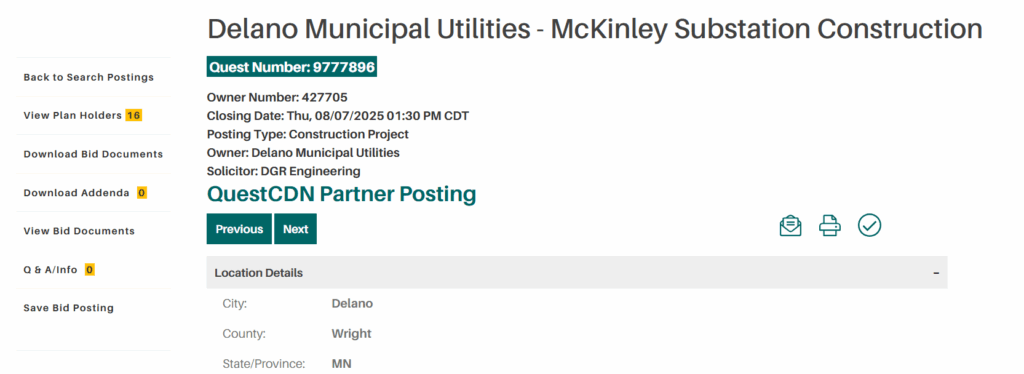Chris Gibson
What Are the Main Types of Power Infrastructure?
Power infrastructure encompasses the systems and facilities that generate, transmit, and distribute electricity. The need for power is growing fast: data centers alone are projected to demand 35 GW of electricity by 2030, an increase from 17 GW in 2022, growing roughly 10% per year. The primary types include:
- Generation facilities: Power plants using fossil fuels, nuclear energy, hydroelectric dams, wind farms, and solar arrays
- Transmission systems: High-voltage lines and substations that move electricity over long distances
- Distribution networks: Lower-voltage lines and transformers that deliver power to homes and businesses
- Storage systems: Batteries and pumped hydro storage that balance supply and demand
- Control centers: Digital and physical systems that monitor and manage grid operations
Each component plays a vital role in ensuring reliable, efficient, and scalable energy delivery.
What Does Power Infrastructure Support?
Modern life depends on robust power infrastructure. It supports:
- Residential and commercial electricity: Lighting, heating, cooling, and appliances
- Industrial operations: Manufacturing, mining, and processing facilities
- Transportation: Electric vehicle charging stations and rail systems
- Digital networks: Data centers, telecom towers, and cloud computing
- Public services: Hospitals, schools, water treatment plants, and emergency response systems
Without it, economic activity and public safety would grind to a halt.
Effortlessly find and bid on power infrastructure projects here.
What Materials and Construction Methods Are Used?
Power infrastructure projects vary widely in scale and complexity, but common materials and methods include:
- Conductors: Copper and aluminum wires for transmission and distribution
- Poles and towers: Steel lattice towers, concrete poles, and wood utility poles
- Transformers and switchgear: Housed in steel enclosures with insulating oils or gases
- Foundations: Reinforced concrete for substations and tower bases
- Renewable installations: Solar panels (silicon-based), wind turbines (composite blades), and hydro systems (steel and concrete dams)
Construction often involves trenching, directional drilling, crane operations, and heavy equipment, all coordinated under strict safety and environmental standards.
How Can QuestCDN Help You Bid on Power Infrastructure Projects?
QuestCDN, powered by Hubexo, streamlines the bidding process for contractors and suppliers across the U.S. With a centralized digital platform, users can:
- Search for active power infrastructure projects by region or specialty
- Download plans, specifications, and addenda instantly
- Discover plan holders before becoming one
- Submit bids securely and track project updates in real time
Whether you’re targeting transmission upgrades or renewable installations, QuestCDN helps you stay competitive and connected in the evolving energy landscape.
See how we make it easy to find and bid on power projects here.
Related
What to Look for in a Construction Bidding Software
How to Master Construction Cost Estimation
How to Create a Request for Quote to Land Your First Government Contract
How to Win More Bids With a Better Request for Proposal
The Ultimate Guide to RFIs in Construction Projects
Best Practices for Optimizing and Bidding on Public Infrastructure Projects


